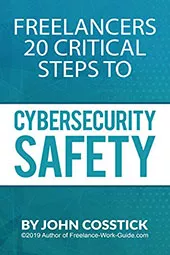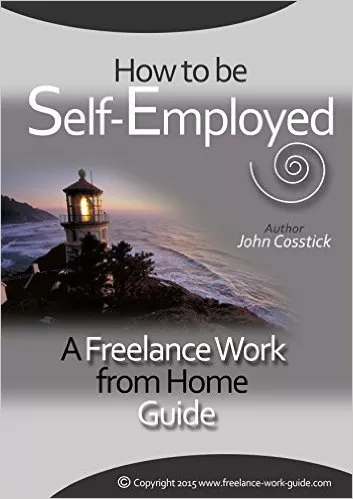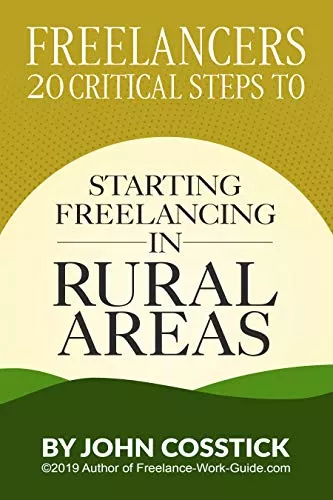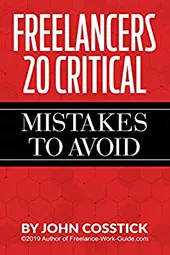Making difficult choices is a part of life. Whether it’s deciding on a career path, choosing a college major, or figuring out how to handle a challenging situation, tough decisions can be overwhelming.

To help you navigate these tough decisions, this article provides tips and insights to make the best choice. By understanding the factors involved in decision-making, you can make more informed choices.
Key Takeaways
- Identify the key factors influencing your decision.
- Consider the potential outcomes of each choice.
- Weigh the pros and cons of each option.
- Reflect on your priorities and values.
- Seek advice if needed, and be patient with yourself as you navigate through tough decisions.
Understanding What Makes a Decision Tough
Making decisions is an integral part of life, and some choices are inevitably more challenging than others. The complexity of a decision can stem from various factors, including the number of options available, the potential consequences of each choice, and the level of uncertainty involved.
The Anatomy of a Challenging Dilemma
A challenging dilemma often involves conflicting desires, values, or goals. For instance, when faced with a difficult decision, individuals may experience a sense of inner conflict, where different aspects of their personality or priorities are at odds with one another.
Why Some Choices Feel Harder Than Others
The perceived difficulty of a decision can be influenced by several factors, including the level of risk involved, the potential for loss or regret, and the degree of uncertainty or ambiguity.
The Psychology Behind Decision Paralysis
Decision paralysis, also known as analysis paralysis, occurs when individuals are overwhelmed by the number of options available, leading to a state of indecision.
| Factors Contributing to Decision Difficulty | |
| 1. Information Overload | The availability of too much information can make it challenging to make a decision. |
| 2. Uncertainty | The presence of uncertainty or ambiguity can make it difficult to determine the best course of action. |
| 3. Conflicting Goals or Values | The existence of conflicting goals or values can lead to inner conflict, making it harder to make a decision. |
| 4. Risk and Potential Loss | The potential for loss or regret can contribute to the complexity of a decision. |
| 5. Multiple Attractive Options | The presence of multiple attractive options can make it challenging to choose the best course of action. |
Common Types of Tough Decisions People Face
Tough decisions are an inevitable part of life, and understanding the types of challenging choices people face can help in making informed decisions. The following sections will explore various categories of tough decisions that individuals commonly encounter.
Career Crossroads and Professional Dilemmas
Career decisions can be particularly challenging, as they often involve significant long-term implications. Whether to switch careers, take a promotion, or leave a job can be a tough decision, influenced by factors such as job satisfaction, personal fulfillment, and professional growth.
Relationship and Family Decisions
Decisions related to relationships and family can be emotionally taxing. Choices regarding marriage, having children, or dealing with family conflicts can be particularly difficult. These decisions often involve balancing personal desires with the needs and expectations of others.
Financial Choices with Long-term Implications
Financial decisions, such as investments, retirement planning, and managing debt, can have significant long-term consequences. These choices often require weighing immediate needs against future goals and considering the potential risks and rewards associated with different financial decisions.
Health and Lifestyle Decisions
Health-related decisions, including those related to diet, exercise, and medical treatment, can be complex and influenced by various factors, such as personal health status, lifestyle, and access to healthcare.
| Category | Common Challenges | Decision Type |
| Career | Professional growth, job satisfaction | Long-term implications |
| Relationship | Emotional taxing, personal desires | Family conflicts |
| Financial | Long-term consequences, risk assessment | Investment decisions |
| Health | Lifestyle choices, medical treatment | Personal health status |
The Impact of Tough Decisions on Mental Wellbeing
The Impact of Tough Decisions on Mental Wellbeing
Tough decisions can significantly affect our mental wellbeing. The process of making a difficult choice can be mentally taxing, leading to decision fatigue and increased anxiety.
Decision Fatigue and Its Effects
Decision fatigue refers to the mental exhaustion that comes from making numerous decisions. When we are faced with a multitude of choices, our mental energy is depleted, making subsequent decisions more challenging. This phenomenon is often observed in individuals who are required to make multiple decisions in a short span, such as managers, entrepreneurs, or individuals with complex personal or professional lives.
Managing Anxiety During the Decision-Making Process
The anxiety associated with tough decisions can be overwhelming. It is essential to develop strategies to manage this anxiety effectively. Techniques such as breaking down complex decisions into smaller, manageable parts, seeking advice from trusted sources, and practicing mindfulness can help alleviate anxiety.
The Relief of Resolution
Making a decision, regardless of its difficulty, can bring a sense of relief. Resolving a tough decision can be a therapeutic experience, as it allows individuals to move forward with clarity and confidence. The feeling of having made a decision can be liberating, reducing the mental burden associated with indecision.
By understanding the impact of tough decisions on mental wellbeing, individuals can better navigate the challenges associated with difficult choices, ultimately leading to improved mental health and wellbeing.
Essential Frameworks for Approaching a Tough Decision
Essential Frameworks for Approaching a Tough Decision
Making tough decisions is an inevitable part of life. Whether it’s about career choices, relationships, or financial decisions, the ability to make informed and confident decisions is crucial. In this section, we will explore several frameworks and tools that can aid in making tough decisions.
The Pros and Cons Method
One of the simplest and most effective methods for making a decision is by weighing the pros and cons. This involves listing down the advantages and disadvantages of each option. By doing so, you can visualize the potential outcomes of your decision and make a more informed choice.
Decision Matrices: Weighing Multiple Factors
Decision matrices are a powerful tool for evaluating complex decisions. They involve creating a table or matrix where you list the factors that are relevant to your decision. Each factor is then assigned a score or weight, and the overall score for each option is calculated. This helps in comparing the different options and making a decision based on the weighted scores.
The 10/10/10 Rule for Perspective
The 10/10/10 rule is a decision-making framework that involves considering the implications of your decision at three different time horizons: 10 minutes, 10 months, and 10 years.
What It Means in 10 Minutes
When considering a decision, think about the immediate implications. What are the short-term consequences of your choice? Are there any immediate benefits or drawbacks?
What It Means in 10 Months
In the medium term, consider how your decision will play out over the next few months. Are there any potential risks or opportunities that may arise in the near future?
What It Means in 10 Years
Finally, think about the long-term implications of your decision. How will your choice affect your life, relationships, or career in the long run?
By considering these different time horizons, you can make a more informed decision that takes into account both the short-term and long-term consequences.
By applying these frameworks and tools, you can make more informed and confident decisions, even when faced with tough choices.
The Role of Intuition in Making Tough Decisions
Intuition plays a significant role in decision-making, particularly when faced with difficult choices. Understanding gut feelings and knowing when to trust your instincts are essential for making informed decisions.
By balancing intuition with rational analysis, individuals can develop a more comprehensive understanding of the decision at hand, ultimately leading to better outcomes.
Seeking Input: Who to Consult and When
Seeking Input: Who to Consult and When
When faced with a tough decision, it’s natural to seek input from others. This can be a valuable step in the decision-making process, as it allows you to gather diverse perspectives and insights that can help inform your choice.
The Value of Different Perspectives
Consulting with others can provide a fresh viewpoint on the issue at hand. By seeking input from a variety of sources, you can gain a more comprehensive understanding of the problem and the potential solutions. This can be particularly helpful when dealing with complex or nuanced decisions.
Avoiding Groupthink and People-Pleasing
While seeking input from others is important, it’s equally crucial to avoid the pitfalls of groupthink and people-pleasing. Groupthink occurs when the desire for consensus leads to a lack of critical thinking and a failure to consider alternative perspectives. People-pleasing, on the other hand, involves making decisions based on the desire to avoid conflict or to gain approval from others, rather than on the merits of the decision itself. By being aware of these potential pitfalls, you can make more informed decisions and avoid the negative consequences of groupthink and people-pleasing.
Setting Boundaries with Well-Meaning Advisors
When seeking input from others, it’s essential to establish clear boundaries with your advisors. This involves being mindful of the potential biases and limitations of your advisors, as well as being clear about what you hope to achieve through their input. By setting boundaries, you can ensure that the advice you receive is relevant, reliable, and actionable, and that it aligns with your goals and values.
By following these guidelines, you can make the most of the input you receive from others and make informed decisions that are in your best interest.
Overcoming Common Obstacles in the Decision-Making Process
Making tough decisions is an inevitable part of life. Whether it’s deciding on a career change, choosing a medical treatment, or resolving a personal conflict, difficult decisions can be a significant source of stress. In this section, we will explore common obstacles that people face when making decisions and provide strategies for overcoming them.
Analysis Paralysis: When You Can’t Move Forward
Analysis paralysis occurs when an individual is overwhelmed by the amount of information available, leading to an inability to make a decision. This phenomenon is often referred to as “overthinking.” When faced with too many options, people may become mired in the decision-making process, unable to choose a course of action.
To overcome analysis paralysis, it’s essential to strike a balance between gathering information and taking action. One strategy is to establish clear decision-making criteria and prioritize your options. By doing so, you can simplify the decision-making process and make it more manageable.
Fear of Regret and How to Manage It
Fear of regret is a common obstacle that can hinder the decision-making process. The fear of making a wrong decision can be so overwhelming that it prevents individuals from making any decision at all. This fear can stem from various sources, including past experiences, societal expectations, and the fear of the unknown.
To manage fear of regret, it’s crucial to develop a growth mindset and focus on the present moment. By doing so, you can reduce the anxiety associated with decision-making and make more informed choices. Additionally, considering the potential consequences of your decisions can help you prepare for the outcomes and develop a more nuanced understanding of the decision-making process.
Dealing with Conflicting Values
Conflicting values can also pose a significant obstacle to decision-making. When personal values conflict with other factors, such as financial or social pressures, it can create a challenging decision-making environment. For instance, an individual may need to weigh the importance of financial stability against personal aspirations or values.
To resolve conflicting values, it’s essential to clarify your priorities and establish a clear sense of direction. By doing so, you can reconcile conflicting values and make decisions that align with your core values and goals.
Practical Steps for Making a Tough Decision
Making a tough decision can be challenging, but there are several practical steps you can take to make the process easier. Here, we will outline some key strategies to help you navigate difficult choices.
Setting a Decision Deadline
One of the most effective ways to make a tough decision is to set a deadline for yourself. By giving yourself a specific timeframe to make a decision, you can avoid procrastination and analysis paralysis. This can help you stay focused and make a decision more efficiently.
Creating a Supportive Environment
Your environment plays a significant role in the decision-making process. Eliminate or minimize distractions, and create a conducive setting that fosters clear thinking. This can involve turning off notifications, finding a quiet workspace, or using tools that help you stay organized.
The Power of Incremental Commitments
Breaking down a tough decision into smaller, manageable parts can make it more manageable. By making incremental commitments, you can reduce the feeling of overwhelm and increase your confidence in your decision-making abilities.

Decision-Making Tools and Resources
Utilize decision-making tools and resources to help you make informed decisions. This can include decision matrices, pros and cons lists, or other frameworks that help you evaluate your options. By leveraging these tools, you can make more informed decisions and reduce the complexity of the decision-making process.
| Decision-Making Tool | Description |
| Decision Matrices | A tool used to evaluate multiple factors and weigh the pros and cons of different options. |
| Pros and Cons Lists | A simple yet effective way to list the advantages and disadvantages of different choices. |
Conclusion: Building Confidence for Future Tough Decisions
As we conclude this exploration of navigating tough decisions, it’s essential to reflect on the insights gained and how they can be applied to future challenging choices. The decision-making process can be complex, involving various factors that influence our ability to make informed decisions. By understanding the elements that contribute to a difficult choice, we can develop strategies to tackle them more effectively.
One of the key takeaways is the importance of being aware of the factors that make a decision tough. This awareness allows us to prepare for the challenges ahead and make more informed choices. By doing so, we can build confidence in our ability to navigate complex decisions, ultimately becoming more proficient in making difficult choices.
In the process of making tough decisions, it’s crucial to strike a balance between intuition and rational analysis. While intuition plays a significant role in guiding our choices, it’s equally important to supplement it with rational thinking to ensure well-rounded decision-making.
By applying the lessons learned from this article, you’ll be better equipped to handle future tough decisions, fostering a sense of confidence and capability in your decision-making abilities. As you move forward, remember that the goal is not to avoid difficult choices altogether but to develop the skills and confidence needed to tackle them effectively.
FAQ
Q1: What makes a decision tough?
A decision can be tough due to various factors such as the complexity of the choice, the level of uncertainty, the potential consequences, and personal biases.
Q2: How can I make a tough decision?
To make a tough decision, it’s essential to weigh the pros and cons, consider multiple perspectives, and sometimes seek input from others. Establishing a clear decision-making process can help.
Q3: What are some common types of tough decisions?
Common tough decisions include career changes, relationship issues, financial choices, health-related decisions, and professional dilemmas, among others.
Q4: How do I overcome decision paralysis?
To overcome decision paralysis, it’s crucial to identify the sources of indecision, break down complex decisions into smaller parts, and establish a clear decision-making framework.
Q5: What role does intuition play in decision-making?
Intuition plays a significant role in decision-making by providing gut feelings that can guide choices. However, it’s essential to balance intuition with rational analysis to make informed decisions.
Q6: How can I avoid analysis paralysis?
To avoid analysis paralysis, set a decision deadline, create a supportive environment, make incremental commitments, and utilize decision-making tools and resources.
Q7: What are some practical steps for making a tough decision?
Practical steps for making a tough decision include setting a decision deadline, creating a supportive environment, making incremental commitments, and utilizing decision-making tools and resources.
Q8: How can I build confidence for future tough decisions?
To build confidence for future tough decisions, reflect on past decisions, apply the insights gained from this article, and practice making decisions using the frameworks and tools discussed.















